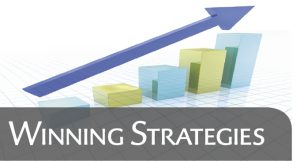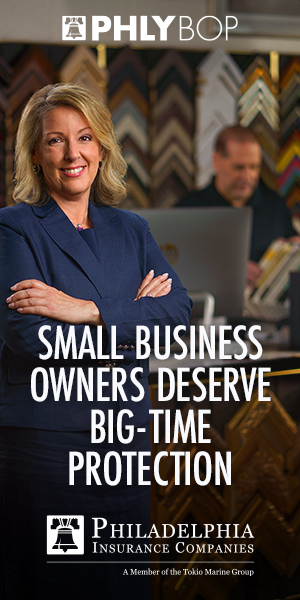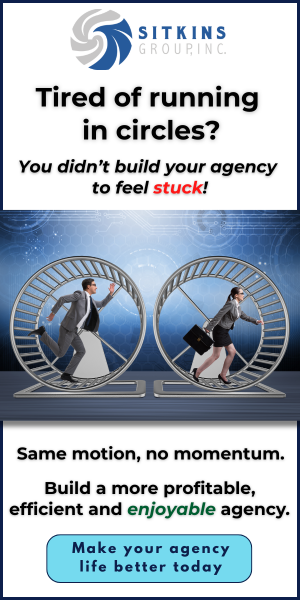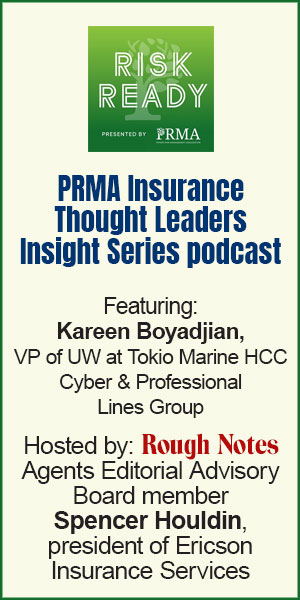It starts with a clear vision of a future business model
[T]he world’s greatest recruitment program
doesn’t involve hiring more people; it focuses
on getting current producers producing.
By Roger Sitkins
It’s no secret that agencies that execute a Best Version Possible (BVP) plan are significantly transformed. In fact, it’s pretty obvious, based on their industry-leading results in all areas. So how do transformed agencies achieve such stellar results and what are their secrets to success? It starts with a clear vision of their future business model.
As Stephen Covey advocates in his classic work The 7 Habits of Highly Effective People, start with the end in mind. What is the end in mind that fuels an agency’s transformation from the Good Results Trap to BVP results? It comes down to the following three freedoms that we want people to attain:
- Financial freedom—the ability to do what you want to do, when you want to do it, how often you want to do it and with whom you want to do it.
- Time freedom—it is no longer necessary for you to oversee every detail of daily operations because everyone is working within their unique abilities.
- Relationship freedom—you choose to deal only with the people you like and enjoy and do not have to tolerate caustic relationships.
Our best clients are committed to the idea that everyone in their agency has the same goal but different roles. Every member of their High-Performance Teams (HPTs) appreciates, respects and trusts what the others do. Together, their goal is to retain and obtain ideal clients. This means that the salespeople are in the Green Zone 80% of the time while the service people are in the Blue Zone, working without interruption, 80% of the time. (FYI: The Blue Zone is so named for a color associated with tranquility, stability and understanding.) This is a very efficient, profitable way to operate a business and achieve its specific end in mind.
To understand your end in mind, you’ll need to examine your Key Performance Indicators (KPIs). Our KPI GrowFit is the combination of your agency’s organic growth percentage and your operating profit percentage. Keep in mind that operating profit does not take into consideration investment or contingency income. We consider both of those income streams to be 100% profitable.
The business model we teach is to have a GrowFit of 40-plus. If you have a 12% organic growth rate and an operating profit of 25%, your GrowFit is 37. Incidentally, the GrowFit of our Sitkins Network private clients is 44. What’s yours?
Another KPI we track is the percent of producers who meet or exceed their annual sales goals. Several years ago, I was asked to complete a study for a group of 19 agencies with an average gross revenue of $21 million each. One of the areas we researched was the above-mentioned. To everyone’s surprise, only 43% were meeting or exceeding their sales goals.
I believe there’s a pandemic in our industry that seems to get overlooked, and that is the excessively high percentage of producers who are not meeting or exceeding their annual sales goals. While they do have some growth and the agency has good results overall, they could be doing much better.
In a recent session with sales leaders, we asked participants what percent of their producers hit their goals. When one of the owners said, “100%,” I asked him how his producers pulled off such a feat. His answer: “We don’t have any goals.” They do now!
How much better would your results be if 80-plus percent of your producers exceeded their goals? You don’t achieve that by lowering the goals!
Secrets of transformed agencies
As I’ve noted many times, the world’s greatest recruitment program doesn’t involve hiring more people; it focuses on getting current producers producing. If you’re looking to transform your agency, one of the best-kept secrets to success is having producers invest 80% of their time and energy in the Green Zone, focused on only four activities: sales, relationship management, continuation, and pipeline development.
Another transformative secret is having account managers investing 80% of their time in the Blue Zone with no producer interruptions and providing an outstanding client experience. All day-to-day service requests go directly to the account managers, not through the producers, which allows them to handle everything one time, the first time.
Among the biggest beefs we hear from account managers is that producers interfere with their productivity. That’s because producers are salespeople—social beings who enjoy interacting with others. But to most account managers, casual conversation is an unwelcome interruption that shatters their focus on the task at hand. When this happens continually throughout the day, they can’t do their job efficiently, which causes productivity to lag.
I like to compare the job of a producer to that of an airline pilot. The pilot is responsible for take-offs (selling the account), landings (continuing the account) and emergencies in flight (dealing with urgent problems). They do not handle baggage, sell tickets or serve snacks. The problem is that most producers think that everything is an emergency when it is not. One of the secrets that helps account managers with the Blue Zone is to (a) have the sales and service teams define what is an emergency and (b) give the account manager the authority to stave off producer requests that don’t meet the definition. What seems like a subtle change makes a dramatic difference in productivity.
Another secret of transformed agencies is having HPTs of sales and service that hold formal meetings every Monday morning to debrief the previous week and pre-brief the next week. They have the same goal (to obtain and retain ideal clients) with the appreciation, trust and respect of their different roles. These meetings have explicit agendas to ensure that nothing is overlooked and that time is used efficiently. More important, they clarify what other departments are doing (or should be doing), which keeps everyone aligned. This helps minimize unnecessary interruptions that affect productivity.
Transformed agencies also share the following secret: Their producers are earning and generating targeted proactive referrals from 80% of the top 20% of their customers. As we always stress, if you’re going to replicate something, what should it be? Answer: your best customers! It’s pretty simple. Your goal should be to retain and replicate the top 20% of your accounts that generate 80% of your revenue.
Another significant secret of transformed agencies is knowing that the best day to lose the sale is the first day. They super qualify all opportunities and refuse to do any practice quoting or unpaid consulting. Their new business closing ratio is over 80%. They’re not wasting their time, nor their internal marketing team’s time, chasing accounts that aren’t worth pursuing.
Transformed agencies exemplify their belief that “every opportunity deserves our very best.” Thus, their producers rehearse 100% of their presentations to A and B accounts. Why would you ever allow a member of your sales team to practice during the actual presentation to a potential A or B client?
Transformed agencies realize that adding staff is not the secret to increased productivity. Instead, they recognize they have excess sales and service capacity that they can use to create a 50% profit on the first $2 million of new revenue next year. They know their only real expense is their producer expense, and that by maximizing their current capacity they don’t have to hire new staff to boost productivity and profits.
Transformed agencies think of sales meetings as non-optional sales improvement meetings. After all, they’re a sales organization! Accordingly, they’re holding more than 90% of their scheduled sales improvement meetings, all of which include low risk practice of presentation skills. During these meetings they’re also honing their soft skills (handling rejections, asking questions, overcoming objections, etc.), which is crucial.
An even more important activity for the transformed agency is the Quarterly Sales Summit. Each quarter, producers, sales leaders and business development coordinators spend a full day together away from the office, reviewing their set offense, conducting low-risk practice, identifying key issues, and choosing a single topic (such as pipeline development, stewardship reports, etc.) to focus on for the next 90 days (vs. the next year, which can be overwhelming). The results are so impressive that every agency that has tried our quarterly summit has made it non-optional. Our best client held quarterly sales summits 18 years in a row—72 consecutive summits— during which time agency revenue grew from $1 million to upwards of $16 million.
Transformed agencies no longer renew policies; they continue relationships. They have a continuation process for A and B accounts that includes a stewardship report meeting at the six-month anniversary. These meetings have an agenda that is sent to the client in advance. This agenda also includes a review of what the agency has done on their behalf since their last meeting (a.k.a., promise report) and the impact it has had on their client’s business. This is also the time to start the reverse referral process by asking the ultimate question: On a scale of 1 to 10, how likely is it that you’d refer a friend or associate to me?
Arguably the biggest secret of transformed agencies is to sell based on referrals only. With the Every/Every Referral Strategy, the objective is for every new client to come from a targeted referral, and for a targeted referral to come from every new client—within 18 months. Once producers do a stewardship report with a client, the client is reminded of what’s been done for them. This underscores the value of their relationship and should also generate referrals to Future Ideal Clients (FICs), not random businesses. One customer soon multiplies into several if you’re doing it right. This creates overflowing pipelines of FICs and more opportunities than time.
One final secret of transformed agencies is that they have a “set offense,” a named, unique, and repeatable sales process that differentiates them in the marketplace. We released our Sitkins Selling System, which consists of The Risk Concierge Program and The Benefits Concierge Program. Once an agency establishes their set offense, they become a Category of One that defies comparison and avoids commodity-based, price-only selling.
Why not make these secrets a reality in your agency? It’s your choice.
The author
Roger Sitkins, CEO of Sitkins Group, Inc., developed The Sitkins Network and The Better Way Agency program. Insurance professionals with diverse levels of experience have benefitted tremendously from his training and leadership.
Roger was inducted into the Michigan Insurance Hall of Fame in 2017 and in that same year also received the Dr. Henry C. Martin Award from Rough Notes magazine. He is known throughout the industry as the nation’s top insurance agency results coach. To learn more, visit www.sitkins.com.





